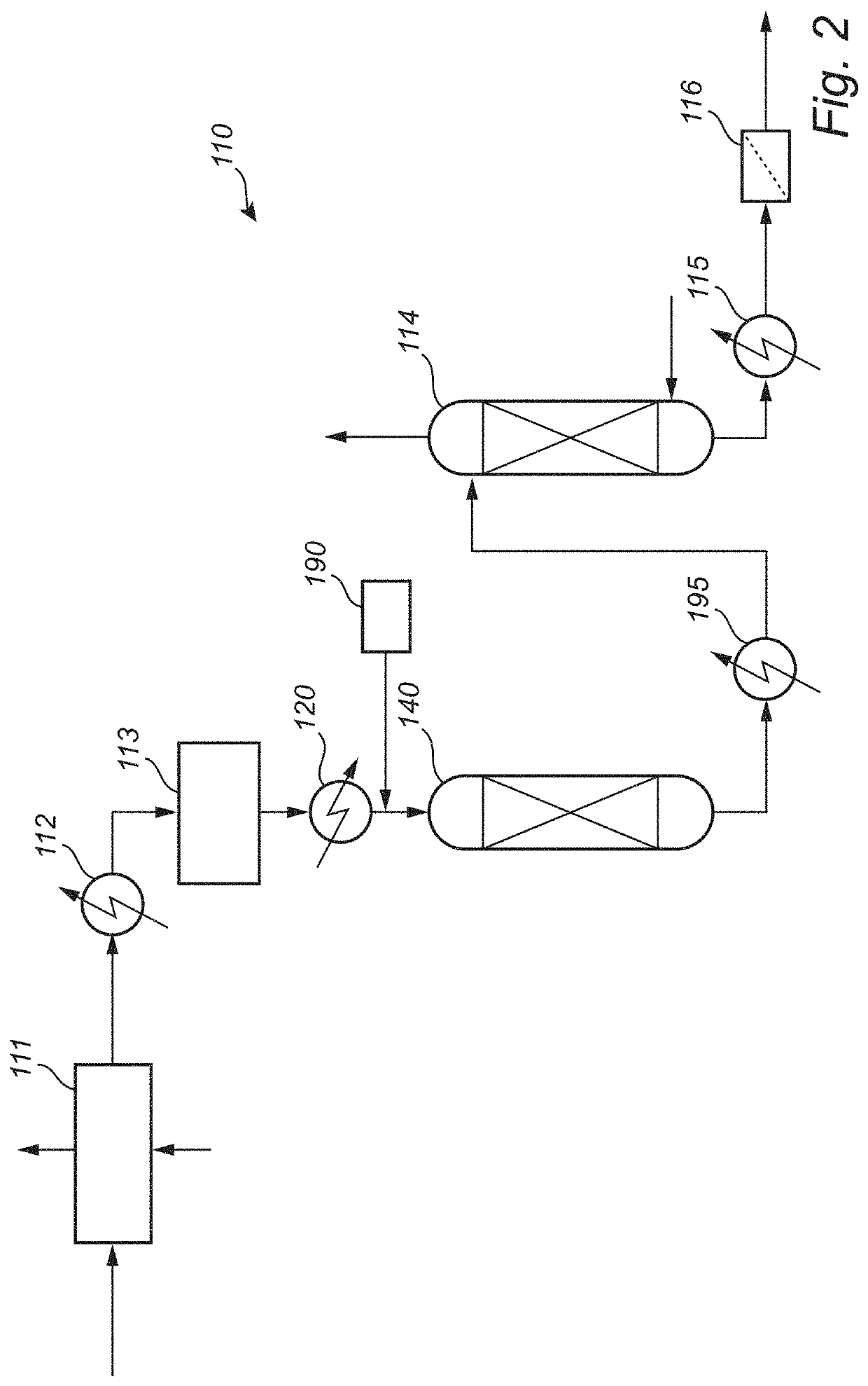Reduction of the content of glycidyl esters in edible oils
- Summary
- Abstract
- Description
- Claims
- Application Information
AI Technical Summary
Benefits of technology
Problems solved by technology
Method used
Image
Examples
example 1
for Glycidyl Epoxide Conversion Activity
[0045]Materials A1, A2, B, C, D and E, all in powder form, were screened for glycidyl epoxide conversion activity. Refined oil (palm olein) was treated by addition of 0.5 wt % of the respective material and mixing for 45 min at 110° C. Subsequently the slurry was filtered and oil was withdrawn for analysis.
[0046]Considering the glycidyl ester content of the palm olein before and after treatment, it was found that A1, A2 and C had the same high glycidyl epoxide conversion activity, whereas B and E showed medium activity and D no activity.
[0047]An indicative taste panel test was conducted (4 participants), giving marks for bland smell and taste. Higher marks being given for a blander smell and taste, the results were untreated refined oil>oil treated with B, C, D or E>materials treated with A1 or A2. These results suggested that fewer undesirable side-reactions appear to take place with the alternatives to conventional bleaching earth or, in oth...
example 2
ce of Epoxide Conversion Catalyst Bodies as Acid Catalyst
[0049]A pilot plant was established operating on a side stream from an industrial unit producing refined, bleached and deodorized palm olein. The pilot plant as well as the industrial unit was manufactured from stainless steel 316. Oil at a temperature of about 120° C. came from a heat recovery step (vacuum heat exchanger, VHE, operated under gravity flow and simultaneous agitation and steam addition) in the deodorization section of the industrial unit. In the VHE 100 ppm citric acid solution had been added to the oil. A side stream was withdrawn at a pressure of about 3.6 barg and sent to a 10 micron bag filter for collection of particles (such as undissolved citric acid or citric acid chelated metals), in this way protecting the subsequent catalyst bed. The temperature of the withdrawn oil was increased to a temperature of 140° C. by an in-line heating element. A needle valve was used to control the flow rate. The oil then e...
example 3
tic Properties of Rapeseed Oil
[0053]Materials A2 (powder), C (powder and pellets with a diameter of 1.6 mm) and F (powder) were tested to compare impact on smell and taste of refined rapeseed oil. The test procedure was as follows.
1. Take about 90 grams (100 ml) of refined rapeseed oil.
2. Heat to about 100° C. in a micro-wave oven and maintain temperature on a heating plate.
3. Dose 0.2% water under agitation.
4. Dose 0.5% of powder material (A2, C, F); or 5% of pellet material (C) under agitation.
5. Keep stirring for about 20 minutes.
6. Filter and re-filter the mixture on filter paper equipped on Buchner funnel placed on top of vacuum flask.
7. Collect filtered oil in 100 ml plastic bottle.
8. Heat filtered oil to about 40° C. on water bath and test for smell and taste (panel test with 5 participants).
[0054]Untreated refined rapeseed oil was considered as a reference sample having a bland smelling and an acceptable taste. Oil treated with material A2 was smelling and tasting bad. Oils ...
PUM
| Property | Measurement | Unit |
|---|---|---|
| Temperature | aaaaa | aaaaa |
| Temperature | aaaaa | aaaaa |
| Temperature | aaaaa | aaaaa |
Abstract
Description
Claims
Application Information
 Login to View More
Login to View More - R&D
- Intellectual Property
- Life Sciences
- Materials
- Tech Scout
- Unparalleled Data Quality
- Higher Quality Content
- 60% Fewer Hallucinations
Browse by: Latest US Patents, China's latest patents, Technical Efficacy Thesaurus, Application Domain, Technology Topic, Popular Technical Reports.
© 2025 PatSnap. All rights reserved.Legal|Privacy policy|Modern Slavery Act Transparency Statement|Sitemap|About US| Contact US: help@patsnap.com



